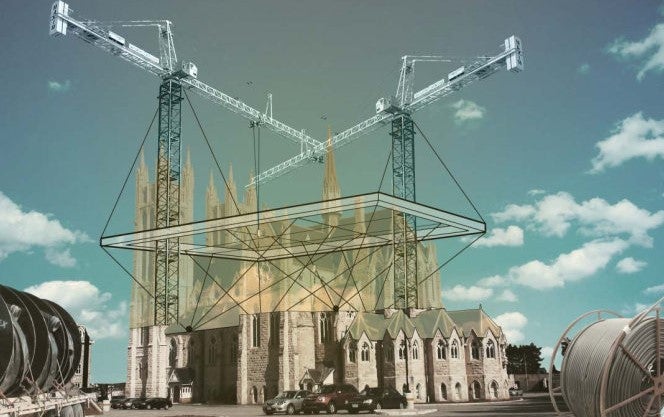
Of the thesis entitled: Manufacturing Distinction; Gaining access to Mass Customization in the Production of Architecture
Abstract:
Contemporary architecture often finds itself challenging the physical constraints of the previous era and typically aims to be one of a kind. This thesis views architecture as the accumulation of design and construction and considers both from the view of constructability. The design of architecture relies upon the formal desire, its materiality, function, direction of which parts are needed and how they can be constructed. The construction of architecture focuses on the coordination, fabrication and assembly of these parts. The industry of construction has three primary constraints: time, cost, and labour. To ease the construction process ideals have been borrowed and implemented from manufacturing to allow streamlining and moved away from the world of bespoke construction.
We sit in a system of construction based upon the manufactured part. Manufacturing operations follow one essential formula, the transformation of raw material through the addition of machinery, tools, energy, and labour, to provide the desired product with greater function and value. All consumer items are created through these methods individually or in some combination, having to navigate the complex order of procedures which transform simple materials into everyday objects. The constraints of material play a significant role in the manufacturing operation available to produce any given object and its subsequent performance in an architectural application.
Architecture is much more than the manufacturing of a single object. Similar to the production of bikes, cars and other consumer products, architecture utilizes what is known as a system of production. With increased product demand the system of production has naturally transformed as well. Improvements can be seen in areas of logical flow (the division of labour and interchangeable parts), physical flow (the assembly line, mechanization, and digitalization), and controls (tolerances and standards). The constraints of a product play a large role in the appropriateness of a system of production for that object, subsequently impacting the feasibility of any object being economically produced. Manufacturing processes are moving towards digital management and flow as a way of offering unique options within the production of manufactured parts. Overall, architecture strives for a way to be unique within the boundaries of manufactured elements, achieving this through different means such as distilling the function of a space to the elements that construct it, constructing with modular elements, and componentized customization.
The transition towards digital design of objects within the industry allows a physically ‘free’ environment to create within; additive manufacturing offers the processing counterpart by digitally shaping physical objects from ‘nothing’. Moving architecture into the digital realm shifts it into a place to easily integrate digital design data into the manufacturing process. Having the ability to bypass the challenges of how we make items, why we choose specific materials, why we produce at specific volume runs, and ties into existing digital production processes. The potentials stand out in the area of producing objects with unique physical constraints or meeting the demands of small product runs.
The examining committee is as follows:
Supervisor:
John Straube, University of Waterloo
Committee Members:
Terri Boake , University of Waterloo
Andrea Atkins, University of Waterloo
External Reader:
Lloyd Alter
The
committee
has
been
approved
as
authorized
by
the
Graduate
Studies
Committee.
The
Defence
Examination
will
take
place:
Friday
December
21,
2018
10:00
AM
ARC
2026
A
copy
of
the
thesis
is
available
for
perusal
in
ARC
2106A.